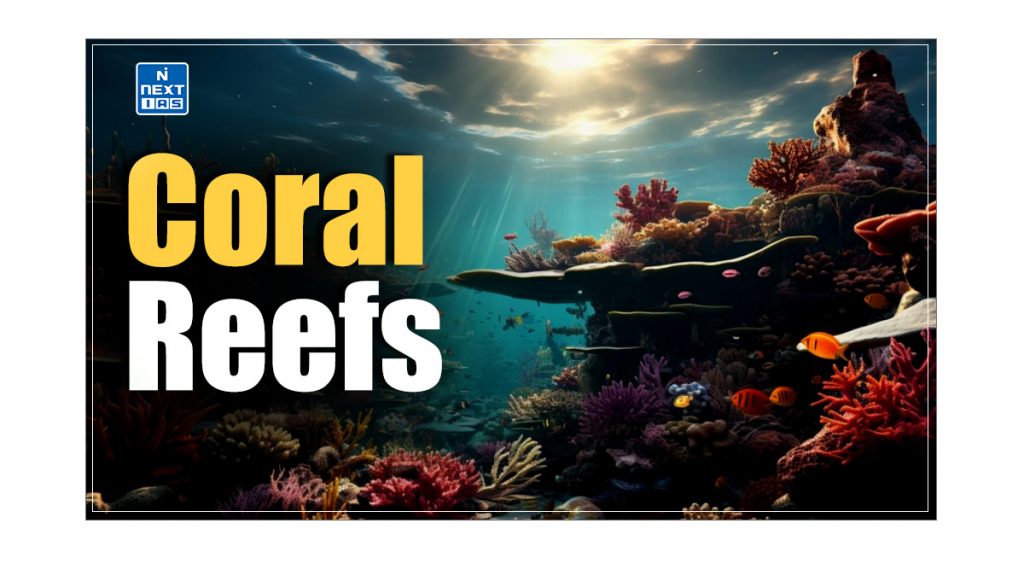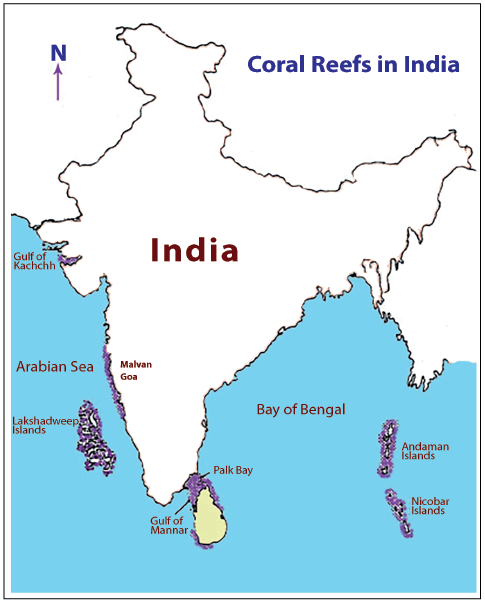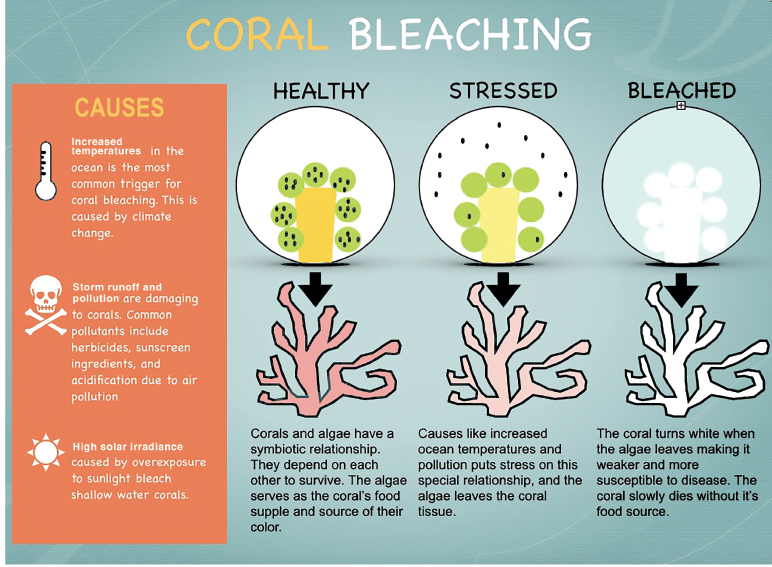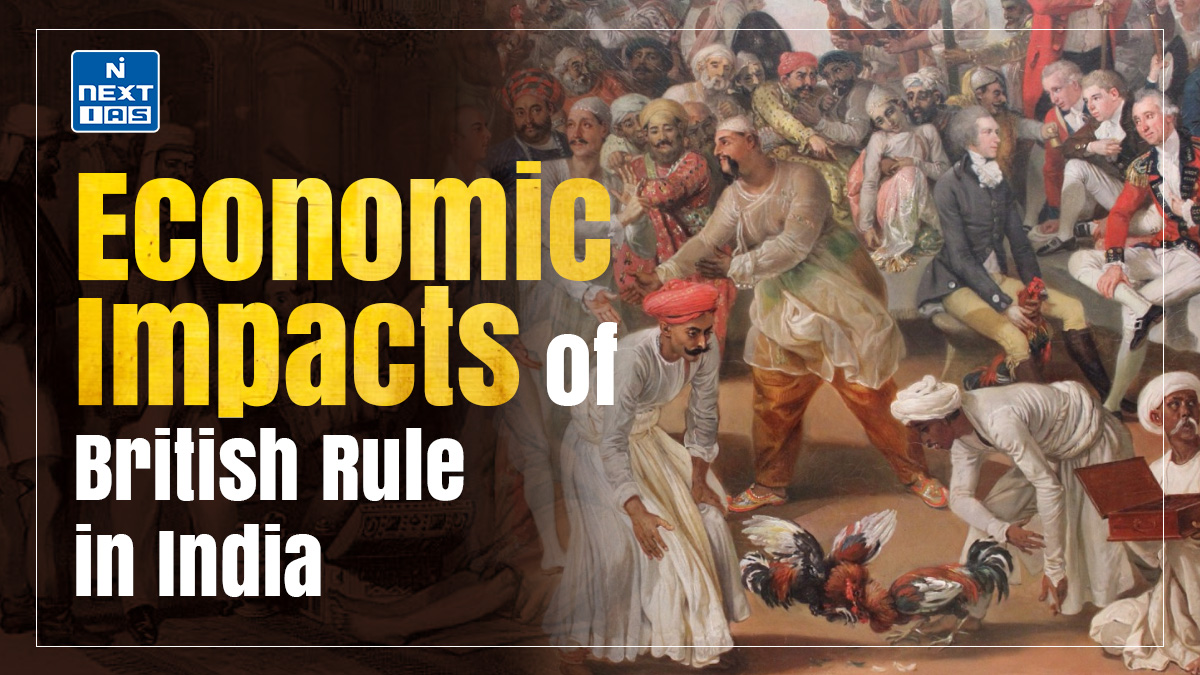
Referred to as the “rainforests of the sea”, Coral Reefs are one of the most productive ecosystems on Earth. They are vital for marine biodiversity, coastal protection, and human livelihoods. This article aims to study in detail the Coral Reefs, conditions for their development, distribution in India, significance, threats and other related aspects.
What are Coral Reefs?
- They are complex and diverse underwater ecosystems formed by the calcium carbonate skeletons secreted by tiny marine organisms called Coral Polyps.
- They are built by Coral Polyps, which are small, soft-bodied organisms related to jellyfish and sea anemones.
- Polyps live in colonies and secrete hard limestone (calcium carbonate) exoskeletons that form the structural foundation of the reef.
- Coral polyps have a mutualistic relationship with zooxanthellae, microscopic algae that live within their tissues.
- Zooxanthellae provide corals with nutrients produced through photosynthesis, while corals offer the algae a protected environment and access to sunlight.
- These reefs are predominantly found in shallow, warm tropical and subtropical ocean waters.
Condition for Development of Coral Reefs
Sunlight
- Corals grow in shallow water where sunlight can reach.
- Corals depend on the zooxanthellae (algae) that grow inside them for oxygen and other things.
- Since these algae require sunlight to survive, corals also depend on sunlight for their survival.
- Corals rarely grow in water deeper than 165 feet (50 meters).
Warm Water
- Corals generally develop in water temperatures of 68–90° F or 20–32° C.
- They have a tolerance to a very narrow temperature range.
Clean and Clear Water
- Corals need clear water that lets sunlight through.
- Corals are sensitive to sediments and pollution.
- Sediments and pollutants make water cloudy and also get deposited on corals, thus blocking the sun and harming the polyps.
- Waste water discharged into the ocean contain too many nutrients that cause seaweeds to overgrow the reef.
Salinity
- Corals need a certain balance in the ratio of salt to water to grow and survive.
- This is why corals do not thrive in regions where rivers discharge fresh water into the ocean or estuaries.
Distribution of Coral Reefs in India
Their distribution in India can be seen as follows:

Significance of Coral Reefs
- They are known as rainforests of the ocean and are rivalled only by tropical rainforests.
- They house a variety of species, such as sponges, crustaceans, molluscs, fish, sea turtles, sharks, dolphins and much more.
- They also act as buffers protecting the shoreline from wave action and reducing the intensity of cyclones and tsunamis.
- The reefs have high economic value as they are a rich source of fish and also a growing tourist site that provides employment to locals.
Threats to Coral Reefs
- Of the total corals of the world, one-fourth has already been destroyed beyond repair due to many factors.
- Corals survive in a very narrow range of temperatures.
- Global warming has led to increased temperature and consequent coral bleaching.
- Tourism with scant regard to the coral reef, which includes careless boating and recreational activities with people touching reefs, stirring up sediment, collecting coral, and dropping anchors on reefs
- All these have led to the destruction of the ecosystem.
- Urban and industrial waste carried by the rivers have been poisoning the reefs.
- Sediments carried by the rivers make the water muddy and cut off the algae from the sunlight, thus killing it.

Conclusion
Coral Reefs are invaluable ecosystems that provide immense ecological, economic, and social benefits. However, they are under significant threat from climate change, pollution, overfishing, and habitat destruction. Understanding their importance and implementing effective conservation strategies are crucial for their protection and sustainable use.
Frequently Asked Questions (FAQs)
Where is the largest coral reef in India?
Andaman & Nicobar Islands is believed to house the largest coral reef colony in India.
Where are the largest coral reefs in the world?
The Great Barrier Reef, located off the coast of Queensland, Australia, in the Coral Sea, is the largest coral reef system in the world.





